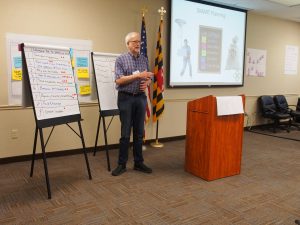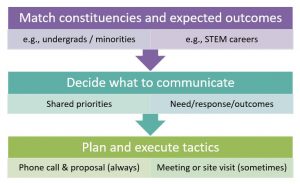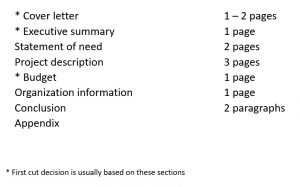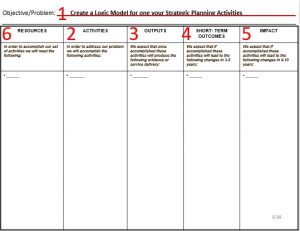 The SBI Training Initiative held a webinar, Harnessing Private Foundation Funding for Your Research Project, with SBI instructor Bill Michener, April 9th, 2020. This webinar is helpful if you’re looking for funding, for advice on proposal best practices, or an opportunity to learn more about the funding options out there for research. Bill does a fantastic job of explaining why scientists should investigate private funding, how one navigates the process of identifying and engaging with funding sources and developing a winning proposal. You can watch Bill’s full presentation here or continue reading for some of Bill’s key messages.
The SBI Training Initiative held a webinar, Harnessing Private Foundation Funding for Your Research Project, with SBI instructor Bill Michener, April 9th, 2020. This webinar is helpful if you’re looking for funding, for advice on proposal best practices, or an opportunity to learn more about the funding options out there for research. Bill does a fantastic job of explaining why scientists should investigate private funding, how one navigates the process of identifying and engaging with funding sources and developing a winning proposal. You can watch Bill’s full presentation here or continue reading for some of Bill’s key messages.
It’s worth your while to explore foundation funding!
Not only does foundation funding have the potential to diversify your funding sources and increase the stability and sustainability of your project, there are over 100,000 foundations that can potentially support your research. Navigating foundation funding doesn’t have to be a pain, they have grant guidelines that can be researched, and staff dedicated to managing the funds they use to support projects. Average foundation grants range between $35,000 – 50,000. Some search engines you can use to find foundation funding include Foundation Directory Online and GuideStar. These are both subscription-based sites, but some parts of the site are free.
Foundations are people-centric

This Photo by Unknown Author is licensed under CC BY-SA-NC
Foundations are focused on people outcomes. They have a vision and mission of what they want to see happen in the world. What impacts will your project have that relate to a societal need? Think about how many people will be trained, employed, or educated, through your project. Consider how your project has the potential to improve our ability to solve a societal problem. Keep these values in mind when researching foundations and considering a proposal. This will help you find which organizations your research is best suited for and subsequently where you’re most likely to successfully secure funding.
When considering a proposal, hone in on the message most appropriate for that foundation. How does funding you help make steps towards the long-lasting systemic change this funder is dedicated to? How do you accomplish the foundation’s priorities? How do you help the foundation gain community visibility? How does your project contribute to creating a lasting change?
Engage!
Respectfully engage with foundation staff both during the application process and after you’ve been awarded support. During the webinar Bill calls for you to consider a funder’s point of view: “If it was your job, how would you want to engage with a potential grantee?”
As the researcher, position yourself as a resource, provide the foundation with opportunities for visibility within your community, and share news regularly (this is particularly important if you’re funded, consider updating your foundation on a quarterly basis).
THE Proposal
Humanize your project, tell a story and avoid jargon.
Use the Kellogg Logic Model to think through your proposal. A well thought out logic model will make it easier for you to identify your ask, need, and outcomes/response.
Check out the webinar recording and handout for a detailed walk-through of the steps to putting together a proposal!
Where to start?
If you need somewhere to start, start by cultivating your donors. Build relationships and identify potential grantors well before you have an immediate need for funding. Communicate with them and offer your time to them as a reviewer or in some other capacity. Foundations are a rich source of funding researchers should invest time and energy into so that their research projects can be more stable and sustainable. Check out Bill’s webinar recording for more in-depth explanations of the topics mentioned and more. Finally, if this is something you believe you could use more training on, consider joining one of our courses!




